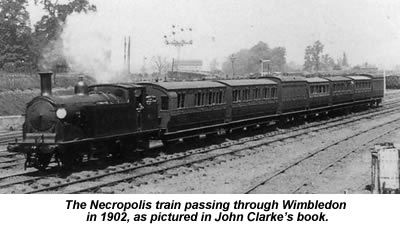From the archives, the fourth of our month of best history posts

If you’ve ever spotted this rather grand looking building at 121 Westminster Bridge Road you might have wondered what function it once served. For the first half of the 20th century, dear reader, this was the London Necropolis railway station and has been referred to as ‘the strangest and spookiest railway line in British history’.
In the first half of the 19th century London’s population surged from one million to almost 2 1/2 million. Churchyards were running out of space to bury the dead and something had to be done, so a plan was hatched by two enterprising men to purchase land near Woking for an enormous cemetery. The idea was that it was far enough away to prevent the bodies from posing a threat to public health, but close enough to let grieving relatives attend funerals without too much hassle. The icing on the cake being that a Waterloo to Woking line had just opened up.
As you can imagine, people at Waterloo were none too keen on seeing corpses and mourners whizz by as they sat in their 19th century Starbucks, so a separate train station was built behind Waterloo in what is now Leake St. The building was specially designed for mourners and had private waiting rooms, restaurants, and first to third class services. One could depart with their recently departed in the morning, attend a weepy funeral midday, and be back by teatime. Talk about Victorian multitasking.

By the end of the 19th century Waterloo station was expanding and Necropolis station had to be moved. In 1902 the station found it’s present home and out of respect to the dearly departed the builders wanted to make it as attractive as a funeral director’s office, so few expenses were spared. The line was eventually shifting almost 2000 corpses a year until the line was damaged in WW2, and a decision was made to consign it to history, like the many souls it escorted.
The railway service proved so popular that it even had it’s own rolling stock. However, the reason for this could actually be that if folks knew they had bought a ticket for a train used to carry dead people they could feel like they’d been, well, ‘stiffed’.
And if you’re still curious, someone has even found enough time to write a book about our little railway to the other side.

